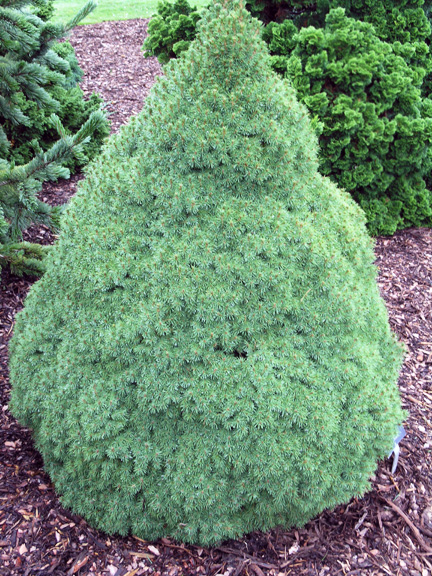| General Description | Small coniferous tree, with small slightly curved needles and bark somewhat exfoliant. |
| ID Characteristic | Compact and narrow with short needles that are held tight to the branch. A very dense pyramidal form. |
| Landscape | Used in the landscape as a specimens as well as borders and formal groupings. They can be used for foundation planting and in rock gardens. |
| Propagation | Propagated from cuttings. |
| Cultivation | Prefers a pH of 6.1 to 7.5 in soils that are moist but well drained. It will tolerate light shade but is prone to winter desiccation in exposed locations. |
| Pests | Susceptible to red spider mites, spruce bagworm and European sawfly. |
| Notable Specimens | The Niagara Parks Botanical Gardens, Niagara Falls, Ontario. |
| Habitat | Horticultural origin. |
| Bark/Stem Description | Orange-like in colour on new growth but, slightly gray on older growth. |
| Flower/Leaf Bud Description | Terminal buds are slightly golden in colour and are 5 mm in length. |
| Leaf Description | Small green needles measuring 1.3 cm that are thin and have a slight curve to them. Leaves are quadrangular in shape; only faint strips of stomata may be seen. |
| Flower Description | Flowers are light red, later become yellowish as they mature; 1-2 cm in length. |
| Colour Description | Light to dark green. |
| Texture Description | Fine and soft in texture, with flexible needles. |
